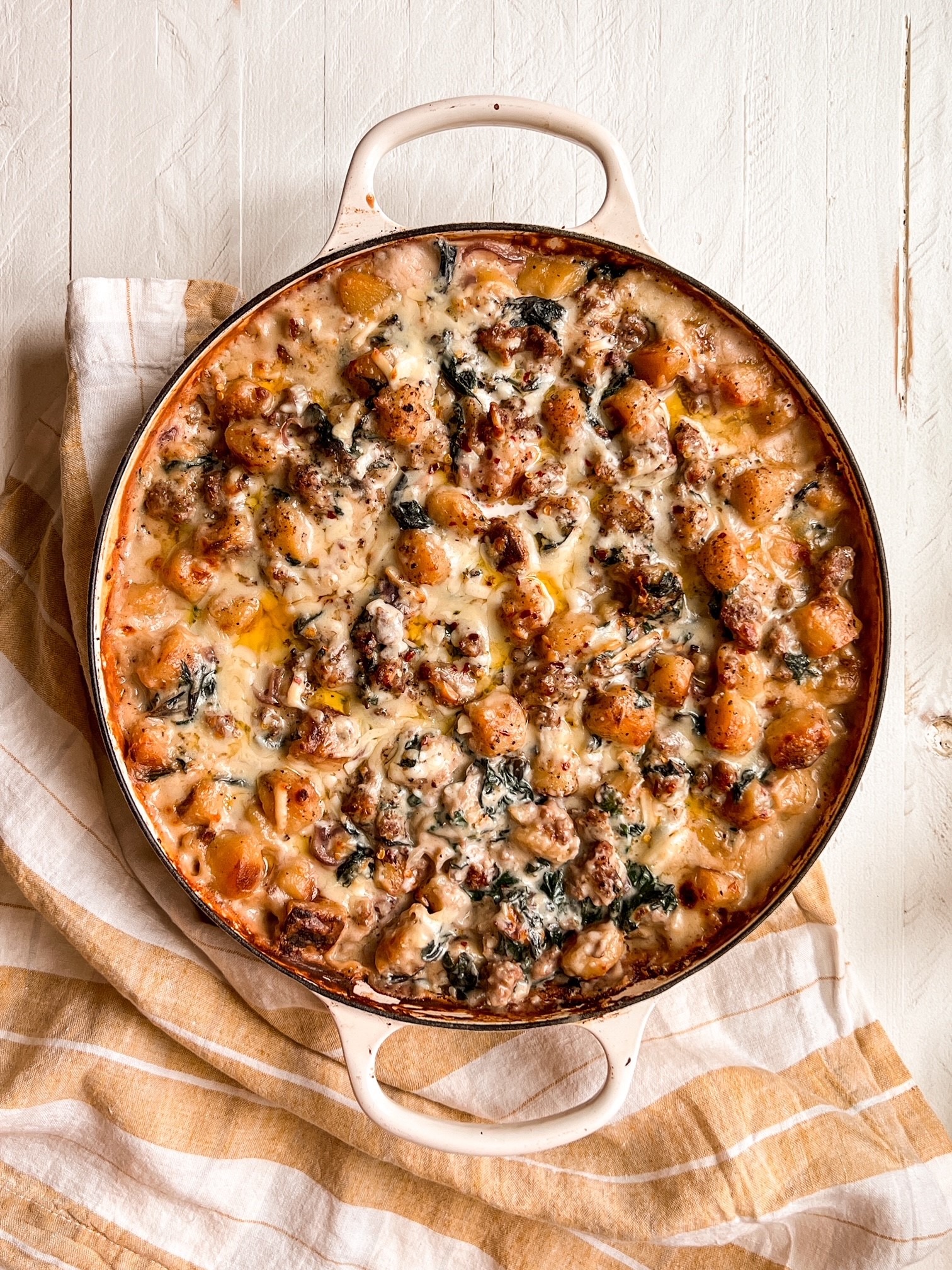
Crispy Gnocchi with Creamy Swiss Chard & Hot Italian Sausage
INGREDIENTS
- 1 1/2 pounds Swiss chard (about 3 bunches)
- 3 tablespoons unsalted butter, divided
- 3 tablespoons extra-virgin olive oil, divided
- 1 (16-ounces) pkg. refrigerated potato gnocchi
- 1 1/2 teaspoons kosher salt, divided
- 1 1/4 teaspoon black pepper, divided
- 1 pound hot Italian sausage
- 1 large red onion (about 12 ounces), thinly sliced (about 2 1/2 cups)
- 1 cup all-purpose flour
- 4 cups whole milk
- 3 ounces Gruyère cheese, shredded (about 1/2 cup), divided
- 2 ounces Parmigiano-Reggiano cheese, grated (about 1/2 cup)
- 1 1/2 tablespoons Dijon mustard
- 1 teaspoon grated garlic
- 1/4 teaspoon cayenne pepper
-
Preheat oven to 375°F with rack 10 inches from heat. Bring a large pot of salted water to a boil over high. Remove stems from Swiss chard. Slice chard leaves into 1-inch-thick strips. Add leaves to boiling water; cook, stirring often, until leaves are wilted and stems are crisp-tender, 1 to 2 minutes. Drain well in a colander. Let cool for 15 minutes. Gently squeeze over the sink to remove any excess liquid. Set aside.
-
Wipe the pot clean. Add 1 tablespoon butter and 1 tablespoon oil; cook over medium-high until butter melts. Add gnocchi; cook, turning gnocchi occasionally, until golden brown and crisp, 5 to 7 minutes. Transfer to a baking sheet. Season all gnocchi with 1/2 teaspoon salt and 1/2 teaspoon black pepper. Set aside.
- Add hot Italian sausage to the pan. Cook for 7-8 minutes or until cooked. Remove sausage from the pan and set aside.
-
Add remaining 2 tablespoons butter and remaining 2 tablespoons oil to pot; cook over medium until butter melts. Add onion; season with 1/4 teaspoon salt and 1/2 teaspoon black pepper. Cook, stirring occasionally, until onion is softened and translucent, about 8 minutes.
-
Sprinkle onion mixture with flour; cook over medium, stirring constantly, for 2 minutes. Gradually whisk in milk until smooth. Bring just to a simmer over medium-high, whisking occasionally. Reduce heat to low; gently simmer, whisking often, until mixture is thickened, about 5 minutes. Remove from heat. Stir in 2 ounces of Gruyère, Parmigiano-Reggiano, mustard, garlic, and cayenne. Fold in gnocchi, sausage, and chard. Season with remaining 3/4 teaspoon salt and remaining 1/4 teaspoon black pepper. Spread mixture evenly into an 11- x 7-inch broiler-safe baking dish; place the baking dish on a baking sheet lined with parchment paper to catch drips.
-
Bake in preheated oven until bubbling around edges, 20 to 25 minutes. Top with remaining Gruyère, and increase oven temperature to broil. (Do not remove baking dish from oven.) Broil until browned in spots, about 4 minutes. Remove from oven; let cool 5 minutes.
